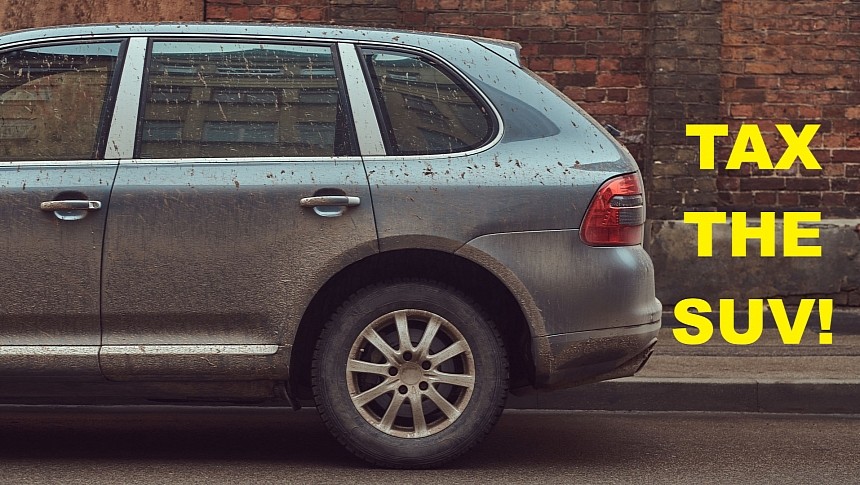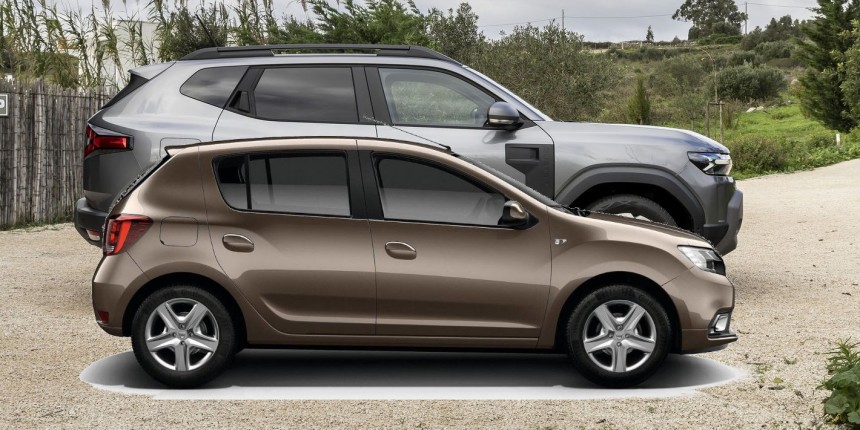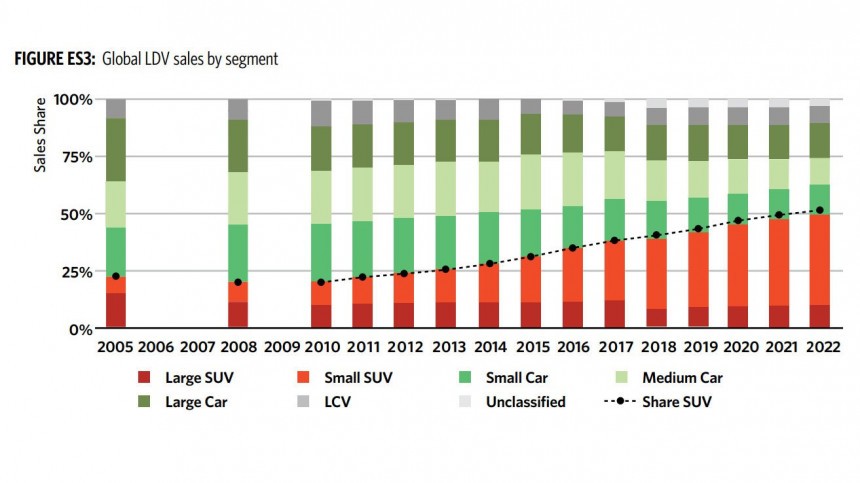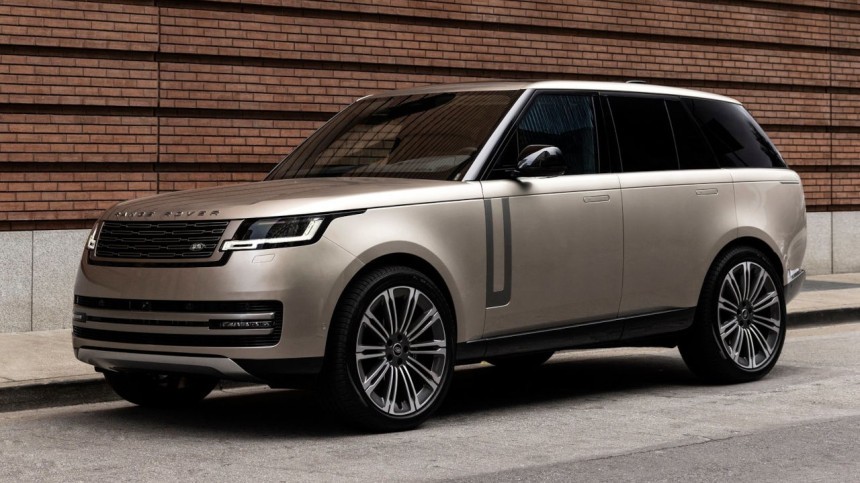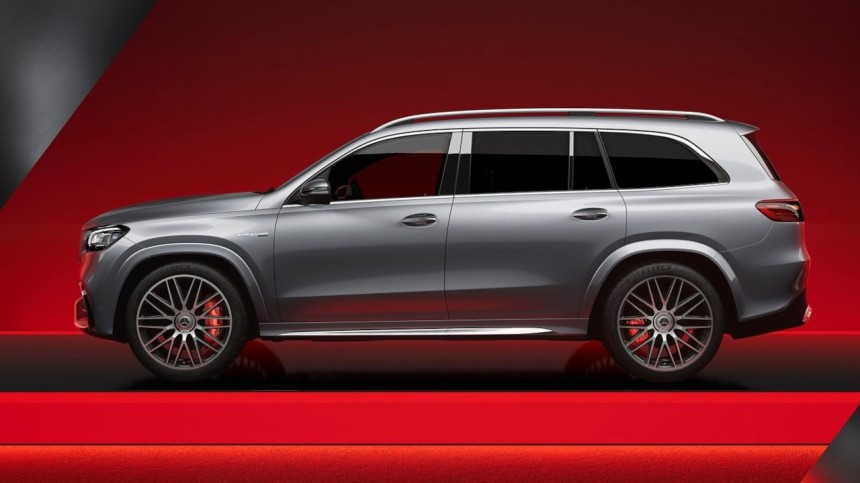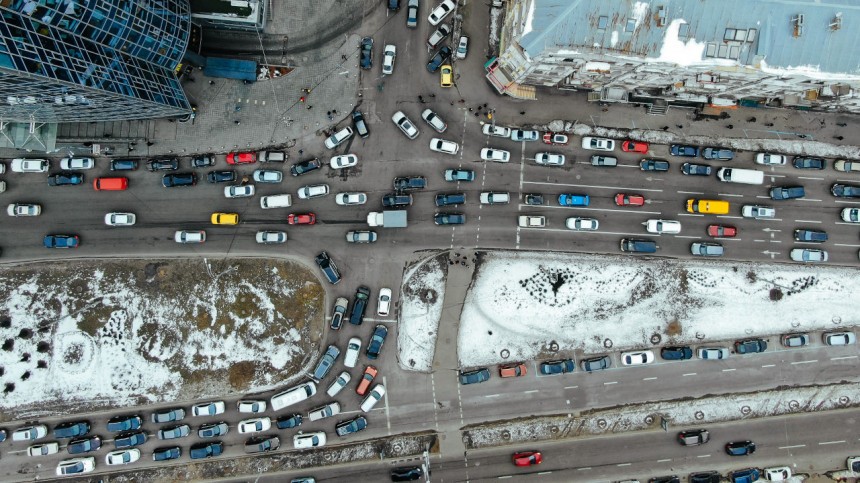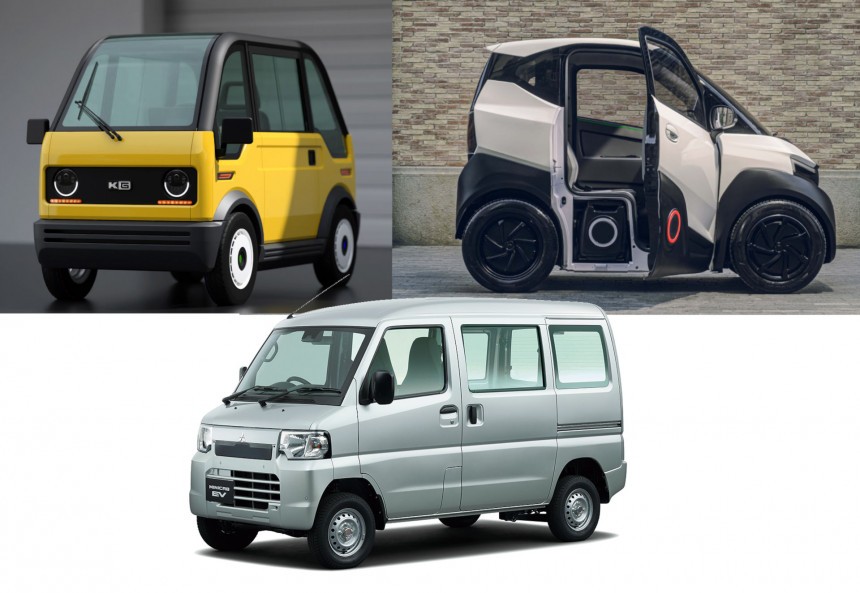Cars getting bigger results in all sorts of problems that customers aren't aware of when deciding to go for a crossover or an SUV instead of a regular passenger car. Moreover, dealers and carmakers' advertising campaigns try to sell you the most profitable cars for them, not the most appropriate for you. Ultimately, we're all stuck with congestion, pollution, and more accidents and fatalities.
In my country, we celebrate our National Day on December 1. This year, it's got something extra because the third generation of the most popular SUV in Europe, built in my country, was recently unveiled.
The new Dacia Duster is bulkier than ever, and its rough looks and tough stance make anyone dream about affordable adventure and praise it like a national treasure these days. Even my wife, who doesn't give a damn about cars ("If it's red, I like it"), had a brief positive comment about it – this Duster seems appropriate for a safe and spacious family car.
Of course, I was smart enough not to open Pandora's box by starting a debate on the subject. In my humble opinion, crossovers and SUVs have more downsides than advantages, and many of the claims favoring them are just marketing stunts meant to lure you into buying a more lucrative product for the seller.
You can think of the iconic Fiat 500 or Mini Morris from the 1960s, which were less than 3 meters / 120 inches long. Half a century later, their modern offspring are more than a half-meter longer and tens of cm wider, but they're still more suitable for urban usage than their crossover siblings, Fiat 600 and Mini Countryman.
Today, all of the popular cars in the B and C segments are visibly longer and wider than their predecessors tens of years ago. Still, they're ok for city dwellings. The problem is that almost all these B and C segment models spawned crossover and SUV variants, which are obviously bigger.
The number of cars in Europe is growing by more than 10 million yearly, so – obviously, again – the streets and cities are more crowded. Things are worsening yearly because of the fast adoption of crossovers and SUVs. In fact, in 2022, more than 50% of new cars sold in Europe were SUVs and crossovers!
Paris's mayor is fed up with it, as their number has increased by 60% in the city over the last four years. Bigger crossovers and SUVs already represent 15% of the cars parked in the French capital's mostly narrow streets, and thus, bigger SUVs worsen traffic jams.
Paris officials have announced a referendum in February to increase park fees for crossovers and SUVs (and, of course, for pick-up trucks, my dear US readers). Why? Because "there are still too many big, polluting cars taking up more and more space on our streets, sidewalks, and even bike paths," as Mayor Anne Hidalgo explained.
Will a more expensive parking fee limit the presence of bigger cars in one of the most expensive capitals in Europe? In my opinion, it won't make too much difference – as London's ULEV zone showed a few years earlier, rich people (usually SUV buyers) are okay with paying more to keep driving and parking their big cars inside the city.
However, Paris's approach is not new. In 2022, the French government imposed a "weight-based tax" for ICE cars over 1.8 tons weight and intends to lower that threshold in 2024. The problem is only cars registered after 2022 are subject to this taxation, and until now, it hasn't seriously impacted sales of bigger cars in France.
I really hope that Paris's move is one of the first steps towards a new widespread European law emphasizing penalties on big cars. In case you didn't notice, there's a war out there between carmakers based on "mine is bigger." How about a fair competition based on "mine is better for the customer, the environment, and the transportation ecosystem"?
Firstly, the authors emphasize that the average efficiency improvement rate of light-duty vehicles doubled in 2019-2022 compared to 2005-2019. Moreover, for the 2020-2022 period, the authors observed a reduction of 4.2% in the global average annual rate of energy intensity.
So, the efficiency of LDVs improved, which might sound like excellent news for ICE fans. But make no mistake: the improvement rate was solely influenced by electrification. That's because "Electric powertrains consume three to six times less energy than internal combustion engine vehicles to cover a unit of distance."
Secondly, the authors observed that the global trend of shifting towards SUVs resulted in 2022 being the first year when SUV sales overtook conventional car sales. I repeat: this is a worldwide phenomenon across nearly all countries, more pronounced in the major automotive markets in North America, Europe, and China.
This trend undermined LDV's efficiency increase: without the "hunger" for SUVs, the improvement rate in the 2010-2022 period could have been about 30% – seven times higher than the 4.2% calculated!
In short, if carmakers hadn't favored SUVs over lighter sedans, hatchbacks, or wagons, LDVs' emissions would have been significantly slashed by now. And the pressure to decarbonize the transportation sector would have been much lower. That's something to remember for those complaining about the high costs of mobility transformation.
By the way, the International Energy Agency concluded that in 2022, SUVs were responsible for almost 1 billion tons of greenhouse gases, roughly the combined national totals of Great Britain and Germany combined. If the 330 million SUVs sold last year were considered a country, it would be the sixth most polluting in the world.
There's also an interesting finding from the British climate campaign group Possible. Analyzing data on vehicle ownership in England, the group's new research concluded that the average ICE car bought in 2013 has lower carbon emissions than an ICE one from 2023. How's that possible?
Well, based on data on vehicle ownership in England, it seems that 20% of households (the high-income ones) are 81% more likely to own a big-engine, highly-emitting SUV, which is also driven three times more than other cars owned by the rest of households.
Possible group suggests that London's ULEV taxation system should not consider only greenhouse gas emissions but also the emissions directly affecting the health of city inhabitants – like PM2.5 and NOx. This contradicts officials' position that older cars emit more NOx, so it's an interesting debate to follow.
In short, IIHS found that "pickups, SUVs, and vans with a hood height greater than 40 inches are about 45 percent more likely to cause fatalities in pedestrian crashes than cars and other vehicles with a hood height of 30 inches or less and a sloping profile."
40 inches translates to a whopping 100 cm, while 30 inches is 76 cm. Many luxury or medium SUVs and crossovers in Europe are between those values but closer to the bigger one. This really is a problem because blunt or more vertical front ends increase the risk of fatal injuries to the head for pedestrians.
The study's author suggests that manufacturers should lower the front end of the hood and favor sloped profiles instead of making SUVs and trucks "intimidating." The massive, blocky fronts have no functional benefit.
IIHS found that blunt fronts in the 30-40 inches hood height group increase by 26% the risk for pedestrian fatalities, while the almost flat hoods increase the risk by 25%. I look at the new Duster and its bulky, high front-end, and I already pity those unfortunate to be hit in the future by this not-so-compact-anymore SUV.
No, it's not the case. Paradoxically, the Spring is actually a little crossover, with a height of a little over 1.5 m / 60 inches and a pretty impressive ground clearance of 15 cm / 6 inches. For the record, I like the boxy VW e-Up! more (which is now out of production), but the Spring was a "Shut up and take my money!" deal a couple of years ago.
Anyway, I drive around 60 km / 37 miles daily in one of the most congested European cities. And I can confirm that such a little car is much more useful, maneuverable, and easy to park than larger crossovers and SUVs.
If I could replace all the four-wheeled behemoths on the street with little cars like mine by magic, I guarantee that pollution levels would be drastically slashed. At the same time, the ease of the congestion would result in saving tens of minutes of commuting every day.
Did I just express the "kei-car" philosophy? Well, at least in Europe, I think this Japanese concept could fit better than you could imagine. For most people, it might sound crazy. But is it crazier than filling up our streets and parking spots with bigger SUVs? I'll let you think about that for more than two seconds.
In the meantime, I'll remind you that some car manufacturers already sell tiny cars in Europe. Or I'd better say four-wheeled vehicles because many don't exactly qualify for what most people understand by "car." Except for smart ForTwo, the pocket-sized real little car whose future is unfortunately blurry.
Aixam is a French brand specializing in microcars, some categorized as quadricycles and some that can be driven from the age of 15 or 16 years, depending on the country. Renault made some buzz a decade ago with its Twizy electric quadricycle, while Stellantis is in this game thanks to the trio Citroen Ami & Opel Rocks-e & Fiat Topolino.
As many studies show, there's only one passenger in the cars driving in cities most of the time. So, how about a car meant for the driver only? The Japanese start-up KG Motors did just that: a one-seater electric vehicle with a top range of 100 km / 62 miles, a 7 HP electric motor allowing a top speed of 60 kph / 37 mph, and a starting price of only one million yen – which translates to €6,200 / $6,700.
While many of you are laughing, I think this little almost-a-proper car suits the car-sharing programs in crowded cities well. Its 2.45 m / 96 inches is similar to the two-seater Citroen Ami, but the Japanese ultra-compact vehicle is only 1.1 m / 43 inches wide. I'd prefer this to a very exposed two-wheeled scooter.
There's also the Spanish Silence brand that created the 2.2 m / 90 inches long S04 Nanocar, which can transport two passengers and some luggage. Besides its nice looks, it's also the first EV with two swappable batteries on trolleys. Think about Gogoro, but with more convenience. And four wheels.
Back in Japan, Mitsubishi Motors revived the electric kei-commercial-car Minicab EV. It will also be available as a four-seater, so it's an interesting alternative to crossovers. This little utilitarian car sources the powertrain from the pioneer i-MiEV, providing a top range of 180 km / 111 miles (by WLTP standards).
Well, there you have it, a few examples of little cars that could (and should) replace big guzzlers in city traffic, at least in Europe. Policymakers, city authorities, and all those living in cities must become aware sooner of critical issues posed by the growing trend of egocentric SUVs and crossovers.
Otherwise, we're just postponing the inevitable, which will probably mean very unpopular solutions in the near future. This is not an activist's manifesto against larger SUVs and crossovers. I'm just pointing out that SUVs' drawbacks weigh much more for society than personal benefits. It's your choice to admit or ignore it and choose an SUV as your next people-mover.
The new Dacia Duster is bulkier than ever, and its rough looks and tough stance make anyone dream about affordable adventure and praise it like a national treasure these days. Even my wife, who doesn't give a damn about cars ("If it's red, I like it"), had a brief positive comment about it – this Duster seems appropriate for a safe and spacious family car.
Of course, I was smart enough not to open Pandora's box by starting a debate on the subject. In my humble opinion, crossovers and SUVs have more downsides than advantages, and many of the claims favoring them are just marketing stunts meant to lure you into buying a more lucrative product for the seller.
"Bigger is better" means worse traffic jams
European cities and little towns are usually crowded because of the mixed scenery and historically building living spaces for more and more people in small areas. Therefore, the "city car" syntax is straightforward to picture: a little vehicle meant to sneak along narrow streets and also easy to park in narrow places.You can think of the iconic Fiat 500 or Mini Morris from the 1960s, which were less than 3 meters / 120 inches long. Half a century later, their modern offspring are more than a half-meter longer and tens of cm wider, but they're still more suitable for urban usage than their crossover siblings, Fiat 600 and Mini Countryman.
Today, all of the popular cars in the B and C segments are visibly longer and wider than their predecessors tens of years ago. Still, they're ok for city dwellings. The problem is that almost all these B and C segment models spawned crossover and SUV variants, which are obviously bigger.
Paris's mayor is fed up with it, as their number has increased by 60% in the city over the last four years. Bigger crossovers and SUVs already represent 15% of the cars parked in the French capital's mostly narrow streets, and thus, bigger SUVs worsen traffic jams.
Paris officials have announced a referendum in February to increase park fees for crossovers and SUVs (and, of course, for pick-up trucks, my dear US readers). Why? Because "there are still too many big, polluting cars taking up more and more space on our streets, sidewalks, and even bike paths," as Mayor Anne Hidalgo explained.
Will a more expensive parking fee limit the presence of bigger cars in one of the most expensive capitals in Europe? In my opinion, it won't make too much difference – as London's ULEV zone showed a few years earlier, rich people (usually SUV buyers) are okay with paying more to keep driving and parking their big cars inside the city.
However, Paris's approach is not new. In 2022, the French government imposed a "weight-based tax" for ICE cars over 1.8 tons weight and intends to lower that threshold in 2024. The problem is only cars registered after 2022 are subject to this taxation, and until now, it hasn't seriously impacted sales of bigger cars in France.
"Bigger is better" means more pollution
The Global Fuel Economy Initiative released a report highlighting the impact of crossovers and SUVs on emissions and pollution in the transportation sector.Firstly, the authors emphasize that the average efficiency improvement rate of light-duty vehicles doubled in 2019-2022 compared to 2005-2019. Moreover, for the 2020-2022 period, the authors observed a reduction of 4.2% in the global average annual rate of energy intensity.
So, the efficiency of LDVs improved, which might sound like excellent news for ICE fans. But make no mistake: the improvement rate was solely influenced by electrification. That's because "Electric powertrains consume three to six times less energy than internal combustion engine vehicles to cover a unit of distance."
Secondly, the authors observed that the global trend of shifting towards SUVs resulted in 2022 being the first year when SUV sales overtook conventional car sales. I repeat: this is a worldwide phenomenon across nearly all countries, more pronounced in the major automotive markets in North America, Europe, and China.
This trend undermined LDV's efficiency increase: without the "hunger" for SUVs, the improvement rate in the 2010-2022 period could have been about 30% – seven times higher than the 4.2% calculated!
By the way, the International Energy Agency concluded that in 2022, SUVs were responsible for almost 1 billion tons of greenhouse gases, roughly the combined national totals of Great Britain and Germany combined. If the 330 million SUVs sold last year were considered a country, it would be the sixth most polluting in the world.
There's also an interesting finding from the British climate campaign group Possible. Analyzing data on vehicle ownership in England, the group's new research concluded that the average ICE car bought in 2013 has lower carbon emissions than an ICE one from 2023. How's that possible?
Well, based on data on vehicle ownership in England, it seems that 20% of households (the high-income ones) are 81% more likely to own a big-engine, highly-emitting SUV, which is also driven three times more than other cars owned by the rest of households.
"Bigger is better" means more fatalities
I like Americans for their obsession with data and statistics. The Insurance Institute for Highway Safety recently published a study conducted on nearly 18,000 pedestrian crashes, focusing on the risk posed by front-end height and profile.In short, IIHS found that "pickups, SUVs, and vans with a hood height greater than 40 inches are about 45 percent more likely to cause fatalities in pedestrian crashes than cars and other vehicles with a hood height of 30 inches or less and a sloping profile."
40 inches translates to a whopping 100 cm, while 30 inches is 76 cm. Many luxury or medium SUVs and crossovers in Europe are between those values but closer to the bigger one. This really is a problem because blunt or more vertical front ends increase the risk of fatal injuries to the head for pedestrians.
IIHS found that blunt fronts in the 30-40 inches hood height group increase by 26% the risk for pedestrian fatalities, while the almost flat hoods increase the risk by 25%. I look at the new Duster and its bulky, high front-end, and I already pity those unfortunate to be hit in the future by this not-so-compact-anymore SUV.
The new "Bigger is better" is actually "Smaller is better"
You could blame me for being biased because my commuting car is a small Dacia Spring: it's only 3.7 m / 147 inches long and less than 1.6 m / 62 inches wide (compared to Duster's length of 4.3 m / 171 inches and width of 1.8 m / 71 inches). So maybe this is the cause of my 2 cents with crossovers and SUVs…No, it's not the case. Paradoxically, the Spring is actually a little crossover, with a height of a little over 1.5 m / 60 inches and a pretty impressive ground clearance of 15 cm / 6 inches. For the record, I like the boxy VW e-Up! more (which is now out of production), but the Spring was a "Shut up and take my money!" deal a couple of years ago.
If I could replace all the four-wheeled behemoths on the street with little cars like mine by magic, I guarantee that pollution levels would be drastically slashed. At the same time, the ease of the congestion would result in saving tens of minutes of commuting every day.
Did I just express the "kei-car" philosophy? Well, at least in Europe, I think this Japanese concept could fit better than you could imagine. For most people, it might sound crazy. But is it crazier than filling up our streets and parking spots with bigger SUVs? I'll let you think about that for more than two seconds.
In the meantime, I'll remind you that some car manufacturers already sell tiny cars in Europe. Or I'd better say four-wheeled vehicles because many don't exactly qualify for what most people understand by "car." Except for smart ForTwo, the pocket-sized real little car whose future is unfortunately blurry.
Aixam is a French brand specializing in microcars, some categorized as quadricycles and some that can be driven from the age of 15 or 16 years, depending on the country. Renault made some buzz a decade ago with its Twizy electric quadricycle, while Stellantis is in this game thanks to the trio Citroen Ami & Opel Rocks-e & Fiat Topolino.
As many studies show, there's only one passenger in the cars driving in cities most of the time. So, how about a car meant for the driver only? The Japanese start-up KG Motors did just that: a one-seater electric vehicle with a top range of 100 km / 62 miles, a 7 HP electric motor allowing a top speed of 60 kph / 37 mph, and a starting price of only one million yen – which translates to €6,200 / $6,700.
There's also the Spanish Silence brand that created the 2.2 m / 90 inches long S04 Nanocar, which can transport two passengers and some luggage. Besides its nice looks, it's also the first EV with two swappable batteries on trolleys. Think about Gogoro, but with more convenience. And four wheels.
Back in Japan, Mitsubishi Motors revived the electric kei-commercial-car Minicab EV. It will also be available as a four-seater, so it's an interesting alternative to crossovers. This little utilitarian car sources the powertrain from the pioneer i-MiEV, providing a top range of 180 km / 111 miles (by WLTP standards).
Well, there you have it, a few examples of little cars that could (and should) replace big guzzlers in city traffic, at least in Europe. Policymakers, city authorities, and all those living in cities must become aware sooner of critical issues posed by the growing trend of egocentric SUVs and crossovers.
Otherwise, we're just postponing the inevitable, which will probably mean very unpopular solutions in the near future. This is not an activist's manifesto against larger SUVs and crossovers. I'm just pointing out that SUVs' drawbacks weigh much more for society than personal benefits. It's your choice to admit or ignore it and choose an SUV as your next people-mover.
